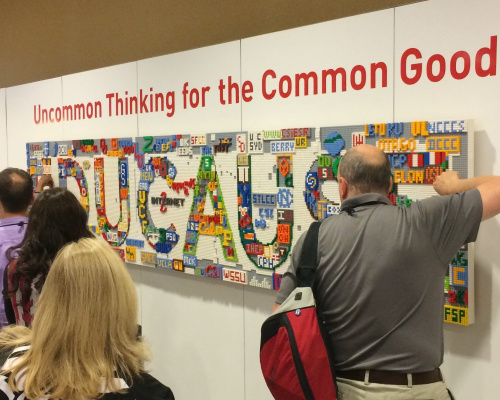Educause 2015: More Sport Coats, Fewer Laptops
Date
On October 28th and 29th, I had the pleasure of attending the Educause conference in Indianapolis. Educause is the nation's largest education-technology conference focused on higher ed. Attendees - approximately 4000 plus about 300 vendors - come from all across the world to participate and engage on a wide variety of topics relevant to the higher ed space.
This year, Educause previewed their Top 10 Issues facing education. In January, they will publish a more detailed paper about their research. The top 10 issues are:
1. Information Security
2. Optimizing Educational Technology
3. Student Success Technologies
4. IT Workforce
5. Institutional Data Management
6. IT Funding Models
7. BI and Analytics
8. Enterprise Application Integrations
9. IT Organizational Development
10. E-Learning and Online Education
 That first item, Information Security, was also named the top issue facing higher ed in the coming years. If you want to look back at some of the previous issues they identified as Top 10, take a look at this interesting interactive graph.
That first item, Information Security, was also named the top issue facing higher ed in the coming years. If you want to look back at some of the previous issues they identified as Top 10, take a look at this interesting interactive graph.
Aside from those issues, some of the other items that I found particularly interesting include what a number of presenters referred to as the student swirl of eLearning especially as it relates to so-called Next Generation Learning Platforms. In part, one of the aspects of this issue that higher ed is struggling with is the idea that the mobility brought about to technology may soon mean that students no longer need to attend just one university - they could pick and choose classes from a number of different schools building their own face-to-face, blended, and online curriculum using many of the tools that are currently available. This will be both an exciting and momentous shift for higher ed. Further supporting this shift was the prominence of LMS providers both in sessions and on the exhibit floor. I spoke with a number of representatives from organizations like Canvas and Schoology (whom I tended to consider as more a K-12-focused organization) who are looking to compete against the bigger higher-ed players (like D2L Brightspace and Blackboard).
Like K-12, higher-ed is beginning to enter an era of unprecedented change fueled in no small part by technology. While many of these issues are yet to be fully realized, the good news is there are quite a few that parallel the struggles of the past three years in K-12 so there will be many learnings and best practices that can be shared from classroom to lecture hall.

